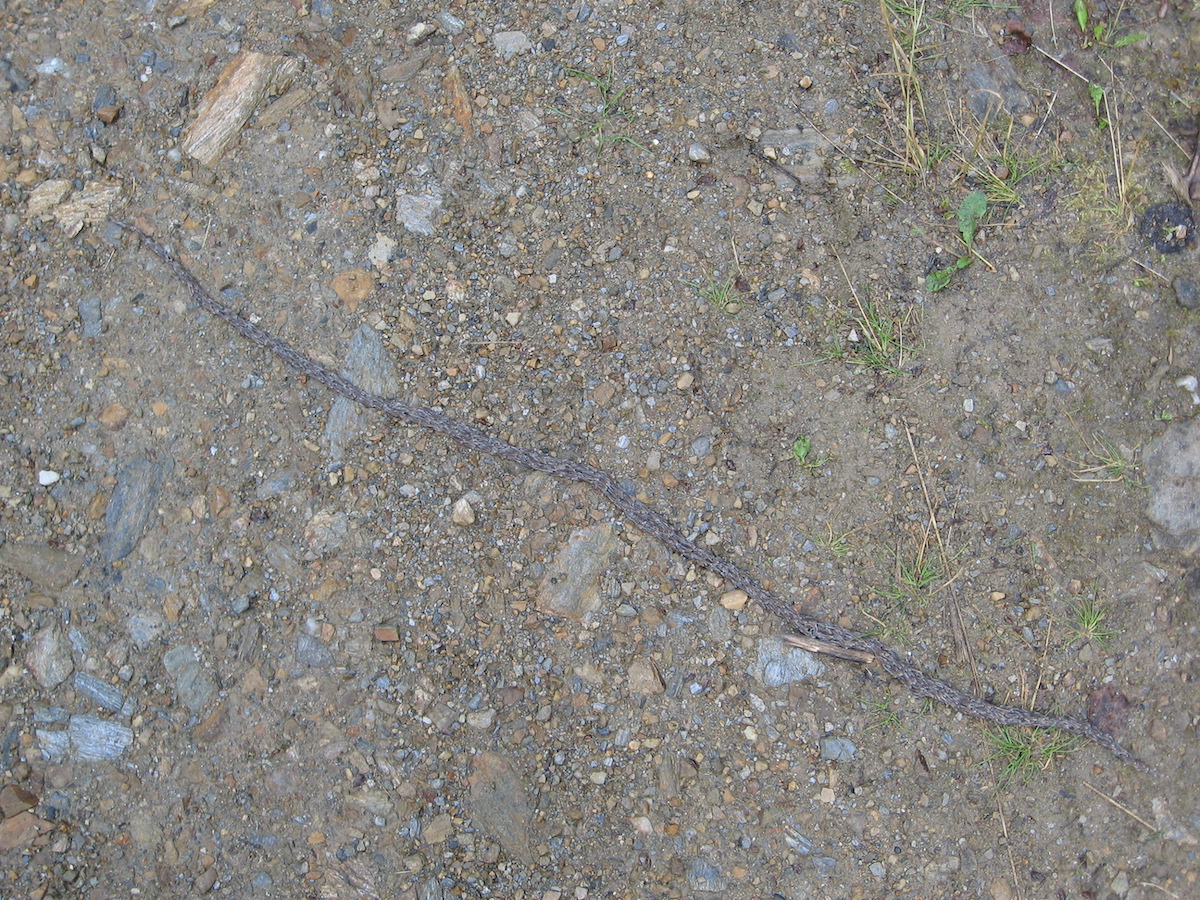A bizarre 'snake worm' has baffled scientists for over a decade, now they know what it is
A newfound species of fungus gnat is behind Alaska's "snake worm" mystery, in which thousands of fly larvae moved together in the shape of a snake.

Researchers have solved Alaska's "snake worm" mystery after discovering a new species of fungus-eating fly whose juveniles band together and slither around like a long, gray serpent.
The snake worm mystery began more than 16 years ago in the summer of 2007, when Ester resident Maggie Billington spotted thousands of tiny, wormlike larvae crawling across a road in a long line.
Billington was a volunteer at the University of Alaska Museum of the North in Fairbanks at the time, so she documented the bizarre sighting and brought photos and samples to Derek Sikes, the museum's curator of insects.
"I figured they must be fly larvae but had never heard of this snakeworm phenomenon," Sikes said in a statement. "I was dumbfounded. This was totally an X-Files case for me."
Sikes and his colleagues have now identified the larvae in a new study published Dec. 30 in the journal Integrative Systematics: Stuttgart Contributions to Natural History. The species, which they've named Sciara serpens, is one of several scarcely studied flies in which the larvae appear to mimic snakes.
The researchers speculated that these larvae take the shape of a snake to scare off birds and other would-be predators or to preserve moisture on dry ground by crawling over one another in a line.
Related: Tortoise beetle larvae use their telescopic anuses to build shields from shed skin and poop
Get the world’s most fascinating discoveries delivered straight to your inbox.
The new species belongs to the Sciaridae fly family, commonly called fungus gnats because they feed on decaying organic matter. Many flies are hard to tell apart in their juvenile life stage, so Sikes cared for larvae collected from a second snake worm sighting in 2007 until they morphed into their dark-winged fly form.
The Alaskan fungus gnats raised by Sikes appeared to most closely resemble a European gnat called Sciara mirabilis, rather than previously identified North American species reported in Maryland and Arkansas.
But it wasn't until 2021 that the team confirmed the gnat was a species new to science. Lead author Thalles Pereira, an insect researcher at the University of Alaska Museum of the North, examined the male gnats' genitalia under a powerful microscope and found notable differences in the shape, compared with those of its European relative.
While it might seem odd for an Alaskan gnat to have more in common with gnats in Europe than with its fellow North American species, the study authors noted that this follows a pattern among other insects in Alaska, such as grasshoppers and beetles, and likely dates back to the Pleistocene (2.6 million to 11,700 years ago). During that time, Alaska was connected to Europe and Asia via the Bering Land Bridge, allowing insects to disperse from eastern Siberia to Alaska while giant ice sheets blocked off the rest of North America.
Though Sikes and his team were able to identify the species behind the snake worm phenomenon, scientists still have a lot of work to do to fully understand these fungus gnats and their peculiar larvae habits.
Furthermore, Sikes and other snake worm witnesses reported seeing beetles running alongside the larvae, which could also be investigated. The beetles may feed on the juvenile flies, but when Sikes put them together in a lab, the beetles mostly ignored the larvae, according to the study.

Patrick Pester is the trending news writer at Live Science. His work has appeared on other science websites, such as BBC Science Focus and Scientific American. Patrick retrained as a journalist after spending his early career working in zoos and wildlife conservation. He was awarded the Master's Excellence Scholarship to study at Cardiff University where he completed a master's degree in international journalism. He also has a second master's degree in biodiversity, evolution and conservation in action from Middlesex University London. When he isn't writing news, Patrick investigates the sale of human remains.



